Syria's Dawn
Text and photos by Sergio Ramazzotti
Abridged by Syharn Shen (沈思含)
Syria's Dawn
Text and photos by Sergio Ramazzotti
Abridged by Syharn Shen (沈思含)
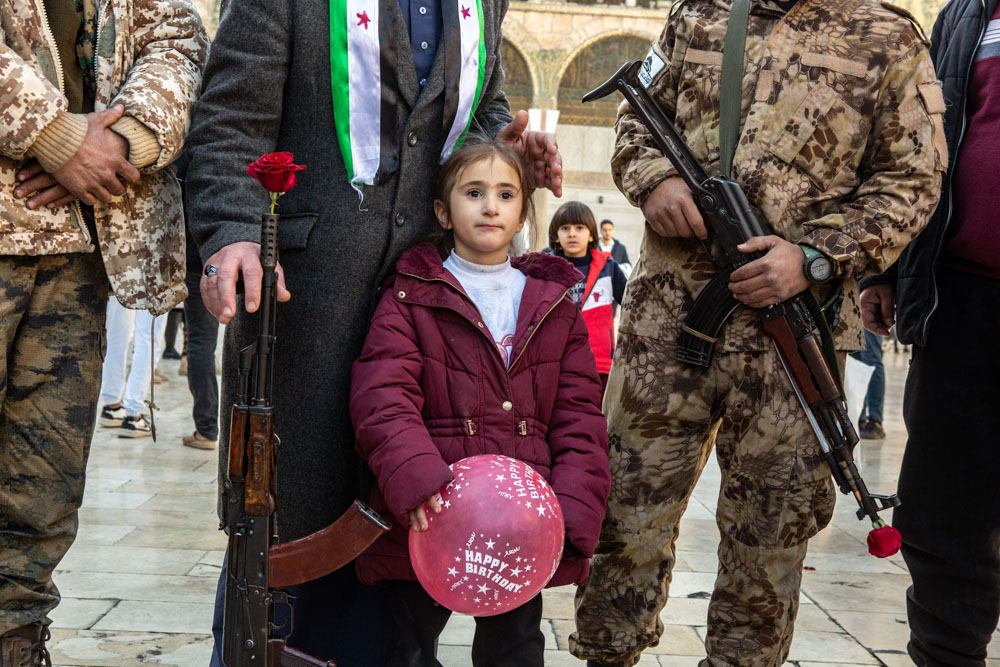
Citizens and HTS militiamen gather at the Great Umayyad Mosque in Damascus.
In December 2024, the Assad regime in Syria collapsed almost overnight, ending 54 years of dynastic rule. Bashar Assad, who inherited power from his father Hafez, fled the country with his family as rebel forces entered Damascus with little resistance. Across Syria, civilians poured into the streets, toppling statues and looting abandoned presidential homes, including the Assads' lavish villa in Shabatliah, where a Monopoly board lay ironically untouched. In the capital, people roamed freely through the once-feared Sednaya military prison, freeing detainees—emaciated and blinking in the sunlight after months of isolation and abuse.
The regime's collapse came after a surprise rebel offensive on November 26, beginning in Aleppo and rapidly expanding across major cities. Government forces, weakened and unsupported, quickly withdrew. Russia's attempts to shore up the Assad regime with renewed airstrikes failed, and by dawn on December 8, Damascus had fallen.
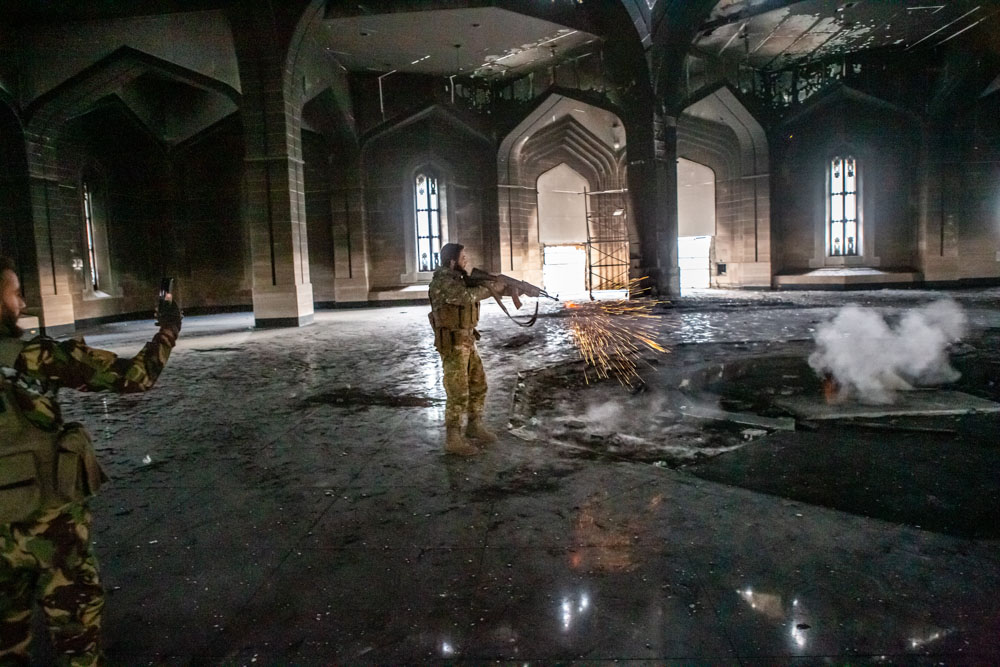
In Al-Qirdaha, HTS militiamen inside the vandalized shrine holding the remnants of Hafez Assad—native of this village—open fire on the former dictator's grave.
The rapid fall was aided by geopolitical shifts: Hezbollah fighters returned to Lebanon to face conflict with Israel, Iranian forces scaled back their presence, and Russia—bogged down in Ukraine—reduced its military support in Syria. Turkey, long involved in funding and organizing Syrian opposition forces, denied direct involvement, but its influence was evident.
Leading the charge was Hay'at Tahrir al-Sham (HTS), commanded by Abu Muhammad al-Jolani, formerly of the al-Nusra Front and originally sent by ISIS to fight Assad. Though HTS has officially distanced itself from al-Qaeda since 2017, its extremist past and suppression of more secular opposition factions like the Free Syrian Army have stirred unease. Despite claiming to represent a unified rebellion, HTS's dominance has alarmed many Syrians who now fear the replacement of one authoritarian rule with another.
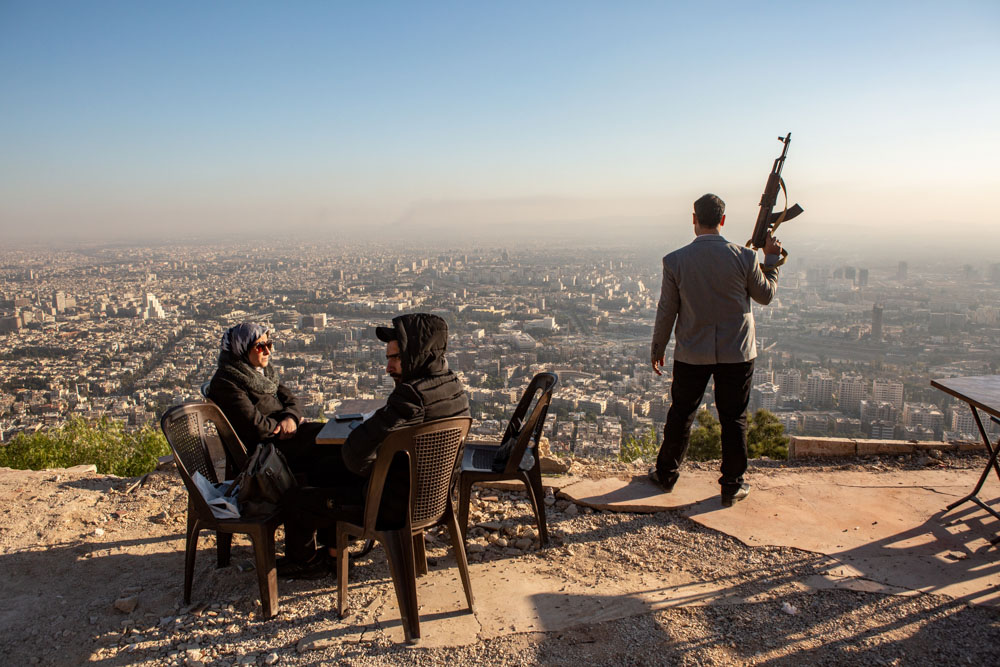
In Damascus, people spend time on top of the Jebel Qassioun, or Mount Qassioun, a popular hangout overlooking the city.
Shortly after assuming control, al-Jolani dissolved parliament, suspended the constitution, and banned allied militias, claiming he would integrate them into a future national army. In January, he declared himself president, suggesting elections could take up to four years. This abrupt authoritarian turn spurred fears among minorities, particularly the Alawites—Assad's sect and long perceived as privileged. Yet as Sheikh Kasir Mohammed Kheir Bek of Assad's hometown Qardaha explained, most Alawites lived in poverty, and many lost sons to forced conscription. The Shabiha militias, led by Assad's cousins, extorted local merchants and ran smuggling routes. After the regime's fall, Kheir Bek negotiated with HTS leaders for Alawite safety, though whether those promises will hold remains uncertain.
The country al-Jolani now governs is shattered. Thirteen years of war have left over half a million dead, 7.5 million refugees, and as many internally displaced. The economy has shrunk by 85%, inflation peaked at nearly 190%, and over 70% of the population lives below the poverty line. Syria faces its worst humanitarian crisis, with 16 million in urgent need of aid.
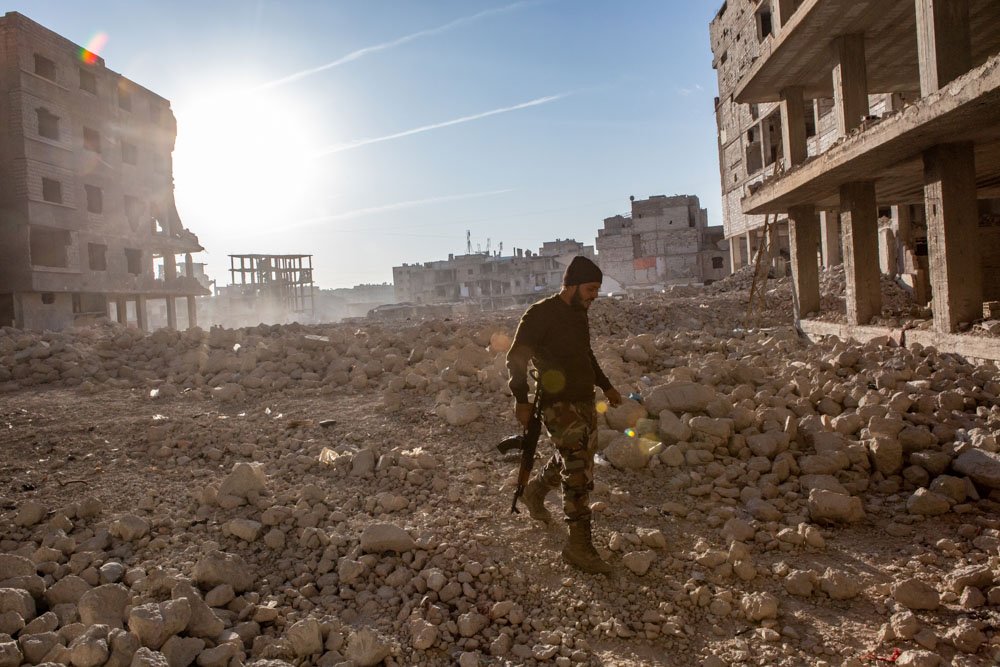
In Damascus, Syria, an HTS team searches for mass grave sites in the Daboul neighborhood with help from local residents. This area was once the frontline between the Syrian army and ISIS insurgents, where many civilians were arbitrarily killed.
Meanwhile, the discovery of mass graves has reopened deep national trauma. Thousands of civilians disappeared during the regime's crackdown since the 2011 Arab Spring protests. Known as mafqudin, the disappeared number between 80,000 and 150,000. In Damascus's Tadamoun neighborhood, human remains have begun to emerge—evidence of systematic executions by regime forces. Survivors recount how people were abducted from homes or checkpoints, never to return. International forensic teams are being mobilized, and the Syrian Network for Human Rights has issued protocols to manage mass graves respectfully and preserve evidence for potential future justice.
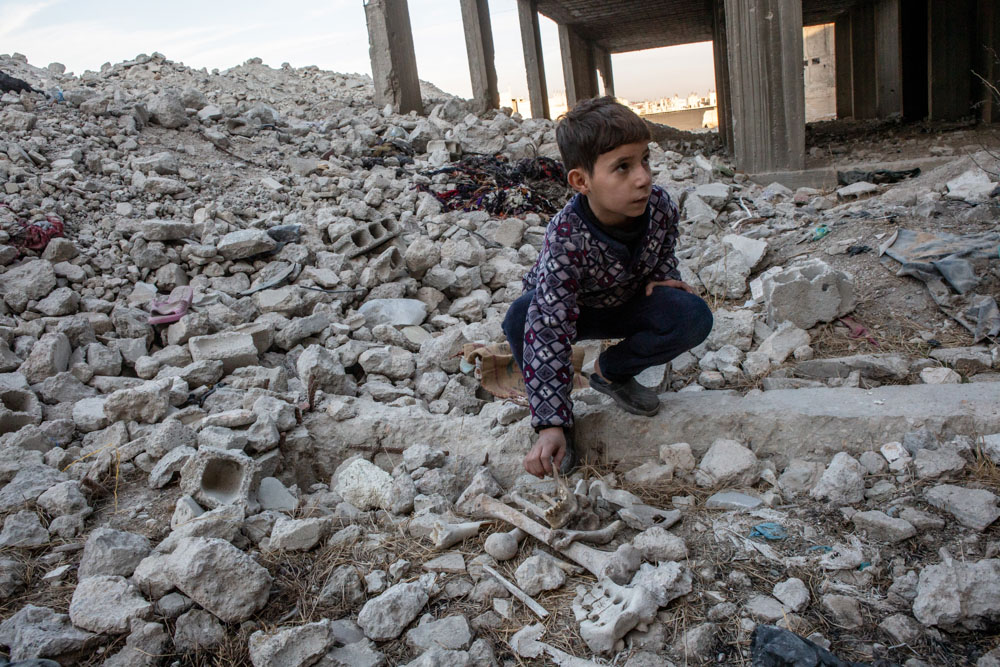
Human remains are being uncovered in Daboul, one of the capital’s most notorious former frontlines, revealing evidence of mass executions during the Assad regime.
Though some Western governments are cautiously engaging with the new authorities, many remain skeptical. During a visit by German Foreign Minister Annalena Baerbock, al-Jolani refused to shake her hand—citing Islamic custom—drawing criticism. Syrian feminist groups, while welcoming the fall of Assad, issued a joint appeal for women's rights and compliance with UN Resolution 2254, which mandates at least 30% female participation in transitional governance. One woman, Aisha al-Dibs, a Syrian-Turkish activist, has been appointed Minister of Women's Affairs. Her appointment, however, followed controversial remarks by an HTS spokesman who claimed women were biologically unfit for leadership—stirring fears that hard-won rights could be rolled back under the new regime.
As Syria emerges from the ashes of dictatorship, it stands at a precarious crossroads—haunted by war, grieving its lost, and wary of what comes next. Whether the future holds renewal or renewed repression remains to be seen.
Contact Us | Plan a Visit | Donate
8 Lide Road, Beitou 11259, Taipei, Taiwan
886-2-2898-9999
005741@daaitv.com
©Tzu Chi Culture and Communication Foundation
All rights reserved.
